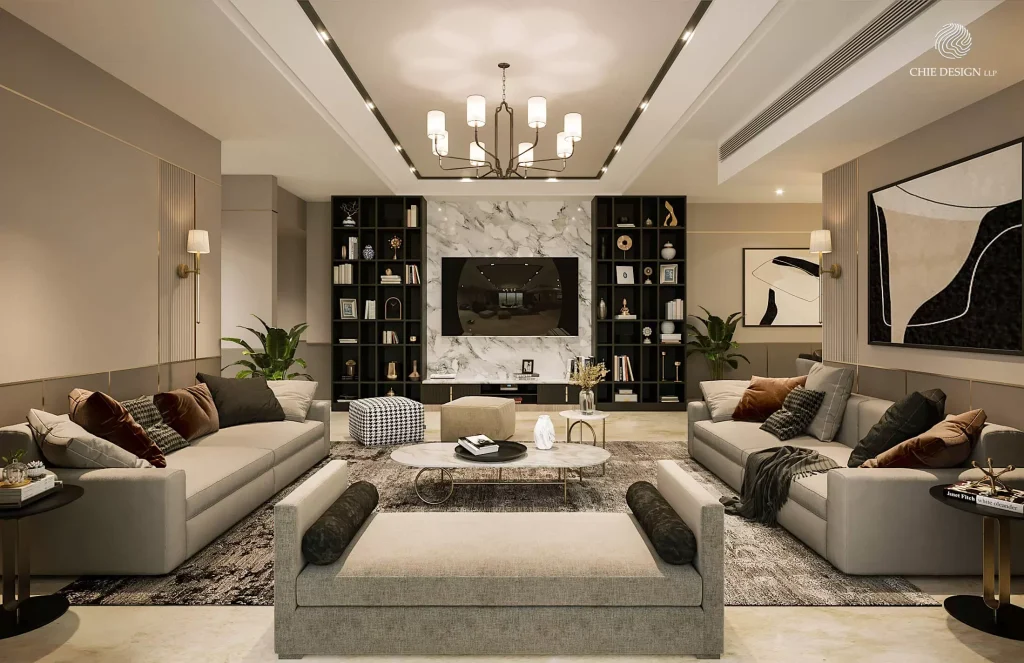House desiner and interer designer
Designing a house is much more than arranging furniture or selecting a color scheme. It is the art of turning an empty space into a warm, functional, and visually appealing home. This is where a professional house designer plays a crucial role. A skilled designer not only helps homeowners bring their vision to life but also ensures the space is optimized for comfort, aesthetics, and functionality. At the heart of this process lies interior design, a discipline that blends creativity, technical knowledge, and innovation to craft spaces that reflect personalities while meeting practical needs.
In this blog, we will explore the importance of a house designer, the role of interior design, its benefits, and how you can make the most of it when creating your dream home.
What is Interior Design?
Interior design is the process of enhancing the interior of a building to create a functional, safe, and beautiful environment. It involves planning layouts, selecting furniture, choosing colors, and blending textures to create harmony within the space. For a house designer, interior design is not just about making a home look beautiful—it is about creating a lifestyle that matches the needs and personality of the people living in it.
From living rooms that feel inviting to bedrooms that encourage relaxation, helps shape every corner of a house. By combining art and science, designers bring balance between aesthetics and functionality.
The Role of a House Designer in Interior Design
A house designer is essentially the bridge between a homeowner’s ideas and reality. While homeowners may have a vision of how they want their house to look, a professional ensures that vision is executed flawlessly. Their expertise in interior design allows them to:
- Plan Functional Layouts – Efficient space utilization is a major part of it.Designers ensure that every inch of space serves a purpose while maintaining flow.
- Select Aesthetic Elements – Colors, textures, and lighting are vital in. A house designer selects elements that work together to enhance the home’s personality.
- Balance Style and Comfort – Beyond beauty, ensures comfort. Furniture placement, ergonomic choices, and lighting create balance.
- Incorporate Trends – From modern minimalism to rustic charm, a stays updated with evolving interior design trends.
- Add Value to the Home – Well-executed interior design increases not just comfort but also the resale value of a property.
Why is Interior Design Important?
The importance of interior design goes beyond appearance. Here are some reasons why it plays a vital role in home design:
- Enhances Quality of Life: Properly designed spaces make day-to-day living easier and more enjoyable.
- Optimizes Space: Especially in modern homes with limited square footage, smart helps utilize every corner efficiently.
- Reflects Personality: A home designed with the right style speaks volumes about its owner’s personality.
- Promotes Comfort and Safety: Good interior design considers ventilation, lighting, and ergonomics for long-term comfort.
- Boosts Property Value: A house with appealing interior design often commands a higher market value.
Key Elements of Interior Design in a Homes
When a house designer works on a project, they focus on several key elements that define the success of interior design.
- Space – Managing space is the backbone of . A designer ensures there is a balance between filled and empty areas.
- Light – Natural and artificial lighting are central to mood and functionality in.
- Color – Colors influence emotions and perception. A house designer uses color psychology within interior design to set the tone of a space.
- Texture and Pattern – Different textures and patterns bring depth to, making spaces lively and engaging.
- Furniture and Decor – Carefully selected pieces complete the look and functionality of the house through thoughtful

Popular Trends in Interior Design
The world of interior design is constantly evolving, influenced by lifestyles, technology, and cultural preferences. Here are some current trends a house designer might recommend:
- Minimalism – Clean lines, neutral colors, and clutter-free spaces define this trend in
- Sustainable Design – Eco-friendly materials and energy-efficient solutions are gaining popularity in modern interior design.
- Smart Homes – Technology-driven integrates smart lighting, automated appliances, and digital security.
- Biophilic Design – Bringing nature indoors with plants, natural light, and earthy tones is a rising trend in interior design.
- Personalized Spaces – Customized furniture, unique wall art, and personalized layouts are a staple of modern interior design.
How to Choose the Right House Designer for Interior Design
Selecting the right house designer is crucial to achieving your dream home. Here are a few tips:
- Check Portfolio – Look at their past iprojects to see if their style matches yours interdesigin
- Evaluate Experience – Experienced designers understand the nuances ofbetter.
- Budget Alignment – Ensure the designer can work within your budget while maintaining quality interior design solutions.
- Client Reviews – Feedback from past clients often highlights the designer’s ability to deliver successful interior design outcomes.
- Communication – A good listens and communicates well, ensuring your vision is respected throughout the process.
DIY vs Professional Interior Design
While some homeowners enjoy experimenting with DIY projects, professional interior design ensures a polished outcome.
- DIY Advantages: Cost-effective, personalized effort, and creative exploration.
- DIY Limitations: Lack of technical knowledge may lead to mistakes in layout, lighting, or space utilization.
- Professional Advantages: A house designer brings expertise, resources, and creativity, ensuring functional and aesthetically appealing
- Professional Limitations: Higher upfront cost compared to DIY.
Conclusion
House Designer: Transforming Homes Through the Art of
Investing in interior design is not just about making a home look beautiful; it is about enhancing functionality, comfort, and value. Whether you choose to work with a professionalr or explore creative DIY projects, one thing is certain— is the key to turning a house into a home.
